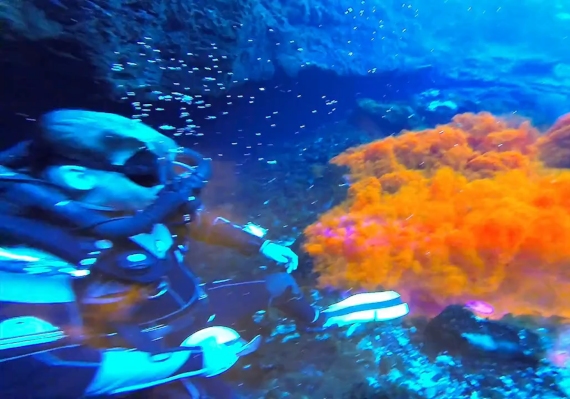Dye Release In Silver Springs from nreaver on Vimeo.
On March 8th, 2015, Dr. Kaplan’s Watershed Ecology Lab implemented the first of four proposed dye tracer experiments in Silver River, one of Florida’s largest springs. The study is part of a $3,000,000 interdisciplinary research project funded by the St. Johns River Water Management District (SJRWMD) to answer one of Florida’s most pressing environmental challenges: why are Florida’s springs changing from systems dominated by clear water and submerged aquatic vegetation to being dominated by algae–and what can be done to reverse the process? In all, ten UF researchers across four departments are engaged in different components of the three-year project.
Within the larger project, the Watershed Ecology Lab is focused on the relationship between spring hydrodynamics, nutrient transformations, and algae proliferation. To estimate river velocities and residence times (how long water stays in the river), researchers injected 5 gallons of a red fluorescent dye (Rhodamine ET) at the Mammoth (Main) Spring vent in Silver River and tracked the flow of dye downstream at nine fixed stations (three in-stream fluorometers and six automated samplers). These data will be used to model flow and mixing in the river and will be supplemented with 318 samples collected by volunteers who helped track the flow of dye downstream overnight. Study results will help improve understanding of how changes in spring flow affect water velocity, nutrient levels, and spring ecology.
The lab wishes to thank the SJRWMD, the Florida Department of Environmental Protection staff at Silver River State Park (in particular Park Manager Sally Lieb), Marion County Parks and Recreation, Patrick Gardner and Doug Marcinek (UF Fisheries) for SCUBA assistance, and over 20 UF student volunteers.
